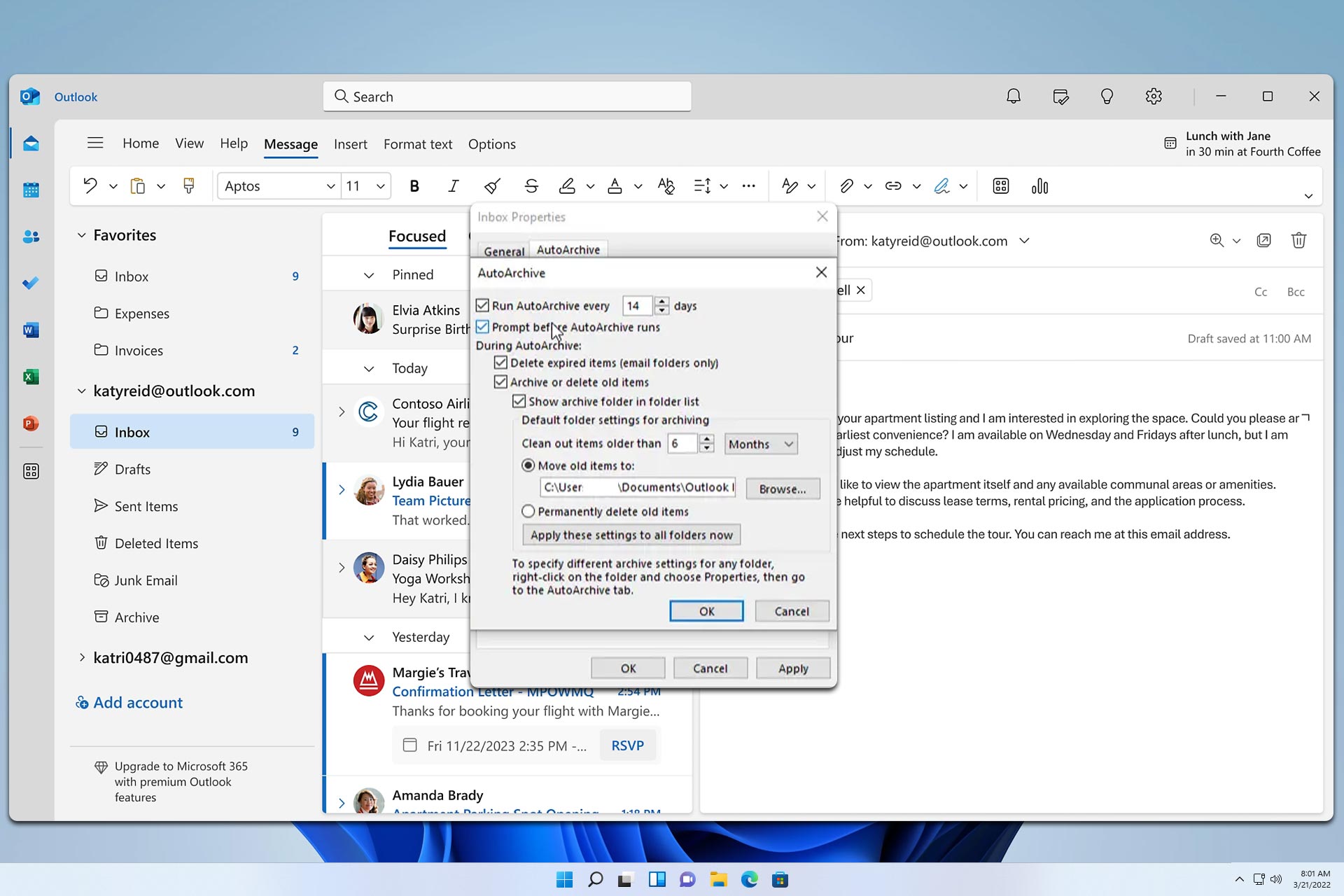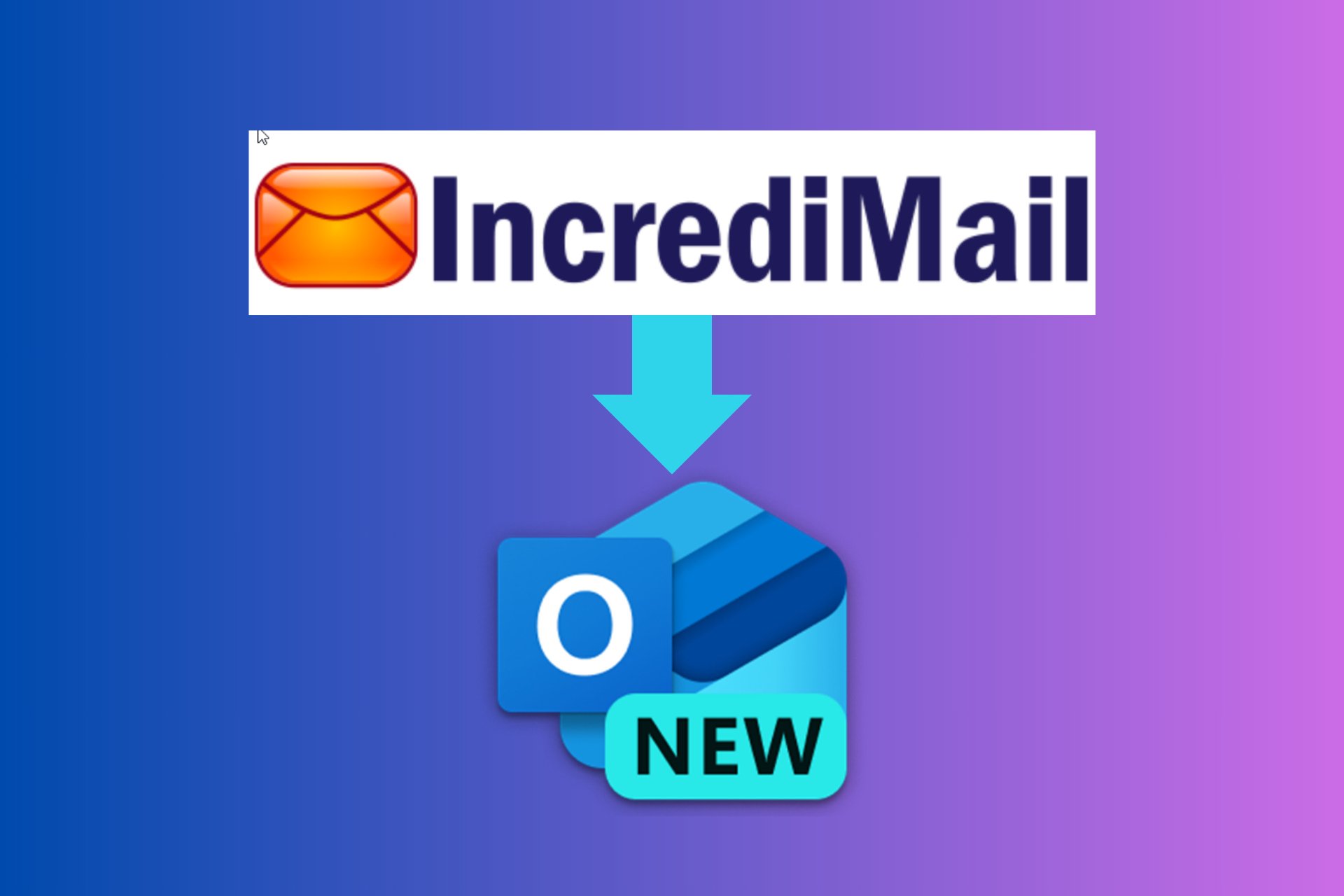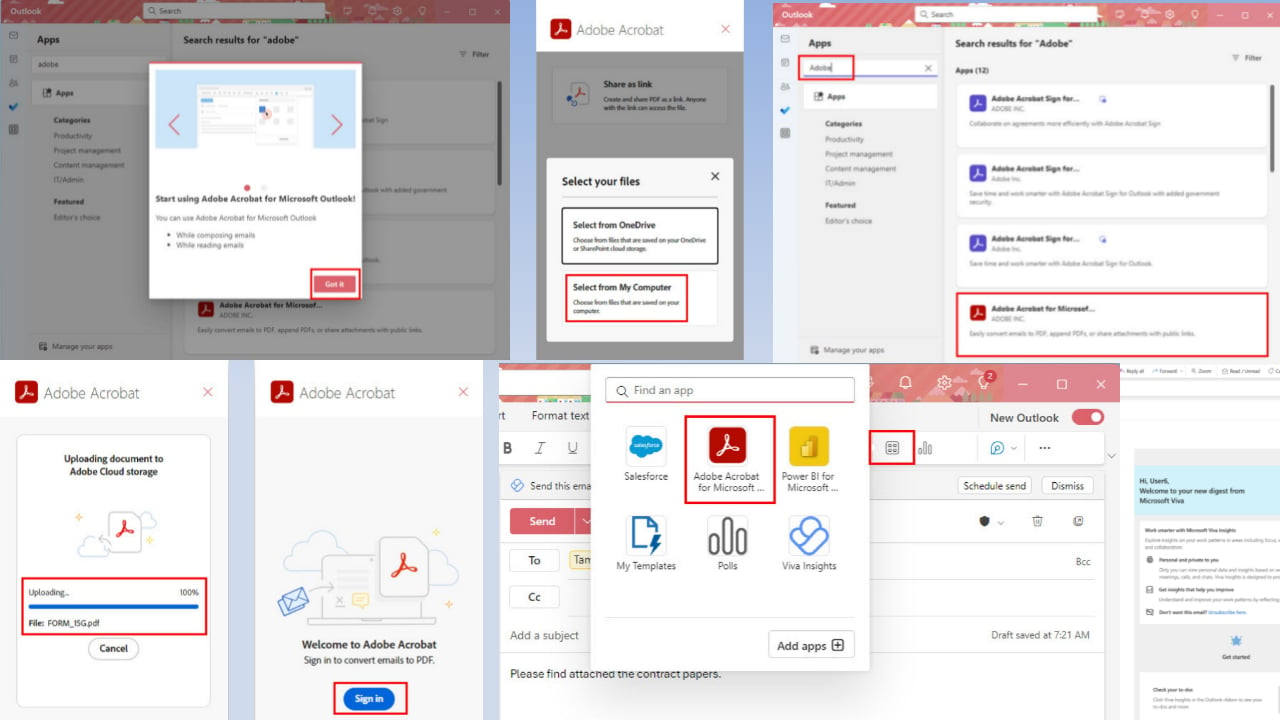Evolution of Outlook: Name, Versions & Features
5 min. read
Updated on
Read our disclosure page to find out how can you help Windows Report sustain the editorial team Read more

First of all, many people make the mistake of thinking that Microsoft Outlook is the successor of Outlook Express, and they couldn’t be more wrong.
In fact, little is left of the original Outlook, namely Outlook Express as even Microsoft stated that the two programs have diverged quite a lot one from the other:
Outlook Express is a different application from Microsoft Outlook. The two apps do not share a common codebase, but they do share a common architectural philosophy.
In this article, we will take a look at the evolution of Outlook, and how it grew from a simple email client to one of the world’s most powerful personal information management software.
Outlook Express (1996 – 2008)
The first versions of Outlook were known as Microsoft Internet Mail and News and came together with early versions of Internet Explorer.
Timeline and version history
Microsoft Internet Mail and News 1.0
Released in 1996 with Internet Explorer 3.
Microsoft Internet Mail and News 2.0
Released in 1996, finally got the name changed to Outlook Express in 1997.
Outlook Express 4.0
Released in 1998, included in Windows 98 and integrated with Internet Explorer 4.
- The most noticeable feature of this version was that it stored messages in *.mbx files
Outlook Express 5.0
Released in 1999, included in Windows 98 Second Edition (SE), integrated with Internet Explorer 5.
- This version abandoned the *.mbx file storage system in favor of the *.dbx files
Outlook Express 5.01
Launched in 2000, included in Windows 2000, is integrated with Internet Explorer 5.01.
Outlook Express 5.5
Released in 2000, included in Windows ME, integrated with Internet Explorer 5.5.
Outlook Express 6.0 (the last official version of Outlook Express)
Launched in 2001, included in Windows XP, integrated with Internet Explorer 6.
While there were plans for an Outlook Express 7.0 to be included in Windows Vista, it was eventually completely replaced by its successor, Windows Mail.
Microsoft Outlook (1997 and onward)
Before Outlook, there were programs called Schedule+ and Exchange Client, but their functionality was eventually incorporated into Microsoft Outlook.
Unlike Outlook Express which was a standalone client that came installed with Internet Explorer, Microsoft Outlook was a part of the Microsoft Office Suite.
This means that new versions of Microsoft Outlook were dependant on when Office got updated, and not the Windows OS.
Timeline and version history
Outlook 97
Released on January 16th, 1997, included in Office 97, came bundled with Exchange Server 5.5.
Outlook 98
Released on June 21, 1998, it was freely distributed with books and magazines for coping with then newest Internet standard such as HTML mail.
- Outlook 98’s setup was based on Active Setup which also installed Internet Explorer 4.
Outlook 2000
Released on June 27, 1999, included in Office 2000, it came bundled with Exchange 2000 Server
Outlook 2002
Released on May 31, 2001, included in Office XP:
- MSN Messenger integration
- Security improvements including the automatic blocking of potentially unsafe attachments and of programs that could access information in Outlook
Outlook 2003
Released on November 20, 2003, included in Office 2003.
This version came bundled with Exchange Server 2003:
- Desktop Alert for when you receive emails
- Email filtering to combat spam
- Support for tablet PCs
Microsoft also added an offline cache with exchange mailboxes. Users didn’t need to have a live connection to the exchange server to view, receive, and send emails.
Outlook 2007
Released on January 27, 2007, included in Office 2007.
This version wasn’t available for Office Home and Student edition:
- Attachment preview (including Excel, PowerPoint, Visio and Word files)
- Outlook Mobile Service support (this allowed SMS text messages to be sent directly to mobile phones)
- Word 2007 replaces Internet Explorer as the default viewer for HTML email
Outlook 2010
Released on July 15, 2010, included in Office 2010 Home and Business, Standard, Professional and Professional Plus:
- The ability to schedule a meeting with a contact by replying to an email message
- Zooming user interface for calendar and mail views for the visually impaired etc.
Outlook 2013
Released on January 29, 2013, included in Office 2013. This version wasn’t available for Office Home & Student edition:
- Attachment reminder
- Outlook data file(.ost) compression
Office 2013 was notorious for having issues with Windows 10, and this guide will show you how you can repair it fast and easily.
Integration with Office 365
Outlook 2016
Released on September 22, 2015, and was included in Office 2016. This was also the first version of Microsoft Outlook to be included in Office 365:
- It was the first version to introduce attachment links to cloud resources
- The ability to search the cloud
- Scalable Vector Graphics
However, this integration in two different office versions came with its fair share of issues.
Outlook for Phones & Tablets
Launched in 2015, included in Office 365, except some commercial editions
- This is the first version of Microsoft Outlook to include iOS and Android support
Outlook 2019
Released on September 24, 2018, included in Office 2019 and Office 365:
- One-click fixes for accessibility issues
- The ability to schedule activities across 3 time zones
- The ability to listen to your emails as they are being read to you in the background
- Automatic download of cloud attachments
Outlook and Lotus Notes
Traditionally, Outlook supported importing messages from Outlook Express and Lotus Notes (currently known as IBM Notes).
IBM Notes provides business collaboration functions, similarly to some extent to Microsoft Outlook, but a bit expanded upon.
These include email, calendars, to-do lists, contact management, discussion forums, file sharing, microblogging, instant messaging, blogs, and user directories.
Because IBM Notes runs on Windows, OS/2, classic Mac OS, SCO Open Desktop UNIX, and Linux, it features interface elements that could be confusing to those used to strictly Windows-oriented programs.
As such, Outlook is a better alternative as far as intuitiveness and familiarity goes.








